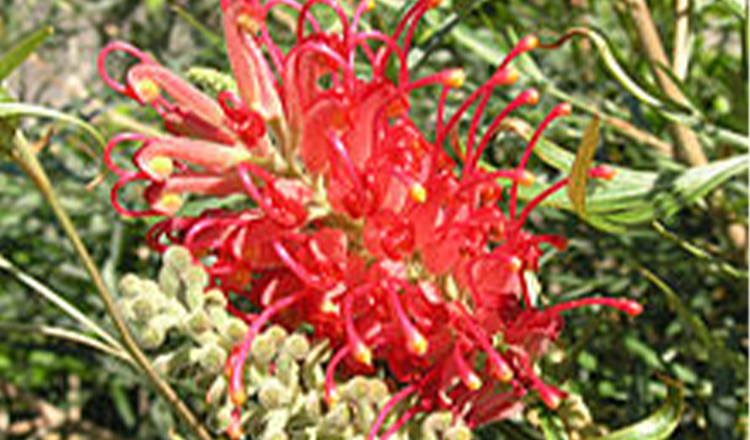Grevillea

Grevillea /ɡrɪˈvɪliə/[1] is a diverse genus of about 360 species of evergreen flowering plants in the family Proteaceae, native to rainforest and more open habitats in Australia, New Guinea, New Caledonia, Sulawesi and other Indonesian islands east of the Wallace Line.[2] It was named in honour of Charles Francis Greville, an 18th century patron of botany and co-founder of the Royal Horticultural Society.[3] The species range from prostrate shrubs less than 50 cm (20 in) tall to trees 35 m (115 ft) tall. Common names include grevillea, spider flower, silky oak and toothbrush plant. Closely related to the genus Hakea, the genus gives its name to the subfamily Grevilleoideae.
The brightly coloured, petal-less flowers consist of a calyx tube that splits into 4 lobes with long styles.[2]
They are good bird-attracting plants. Honeyeaters in particular are common visitors. They are also used as food plants by the larvae of some Lepidoptera species, including the dryandra moth and Pieris rapae (small white).
Many species of grevilleas are popular garden plants, especially in Australia but also in other temperate and subtropical climates. Many grevilleas have a propensity to interbreed freely, and extensive hybridisation and selection of horticulturally desirable attributes has led to the commercial release of many named cultivars. Among the best known is ‘Robyn Gordon’, a small shrub up to 1.5 m (5 ft) high and wide which can flower 12 months of the year in subtropical climates. The cultivar ‘Canberra Gem’ has gained the Royal Horticultural Society’s Award of Garden Merit.[4][5]
They can be grown from soft tip cuttings from December–March (in the Southern Hemisphere) or fresh seed. Many harder-to-grow species can be grafted onto hardy rootstock such as Grevillea robusta.
There is an active Grevillea Study Group in the Australian Native Plants Society for people interested in grevilleas, both for uses in horticulture and for conservation in the wild.
